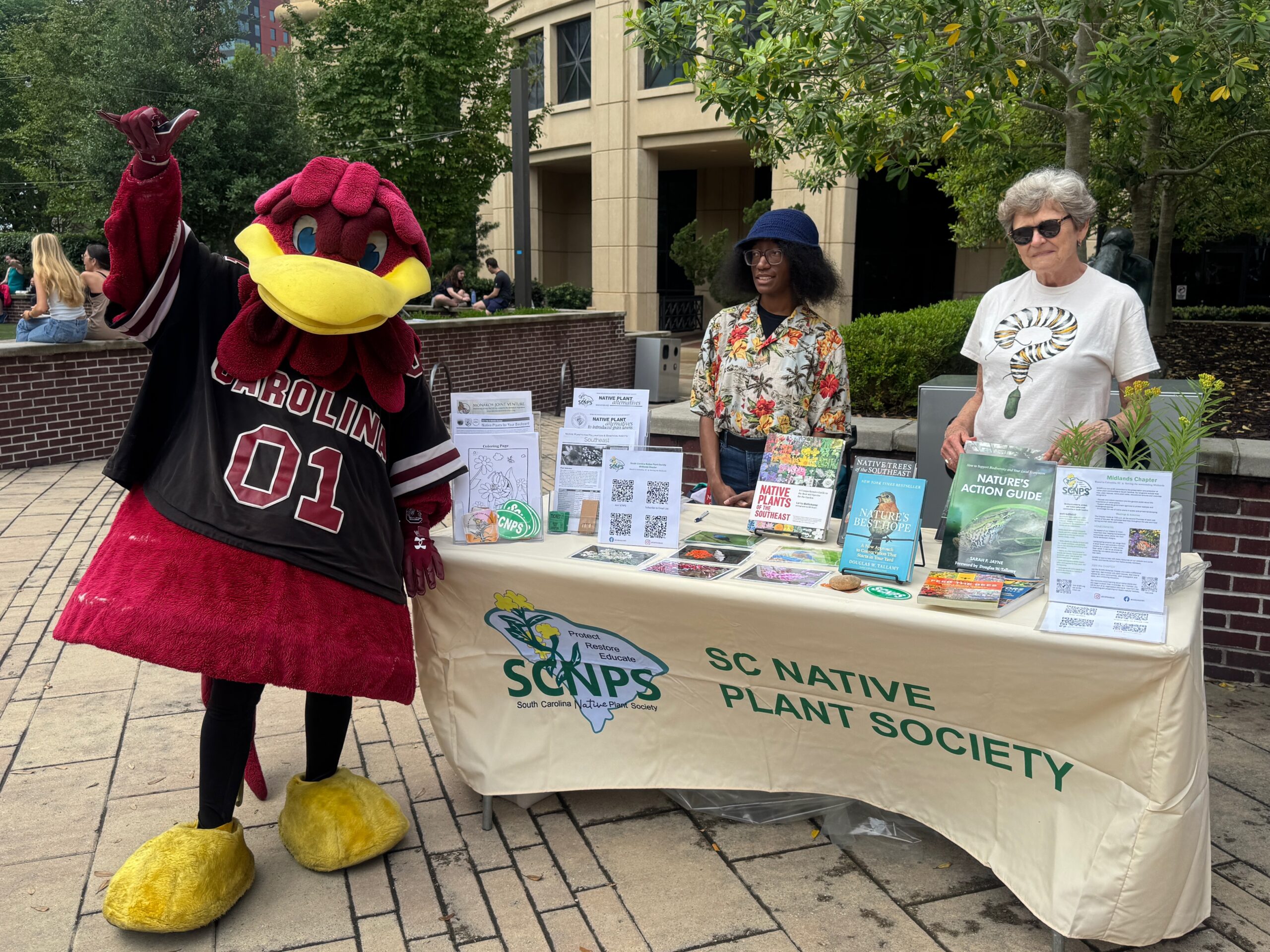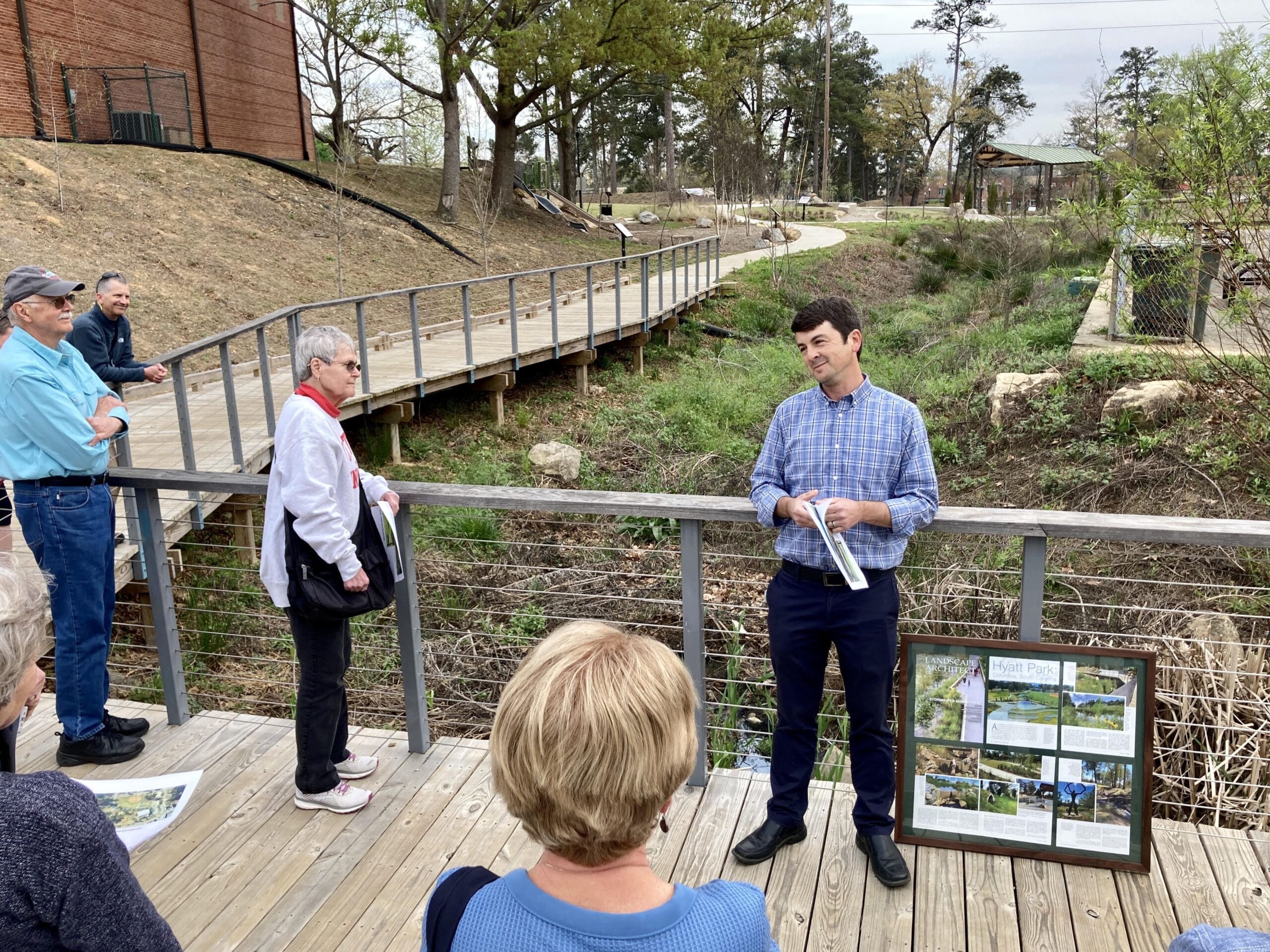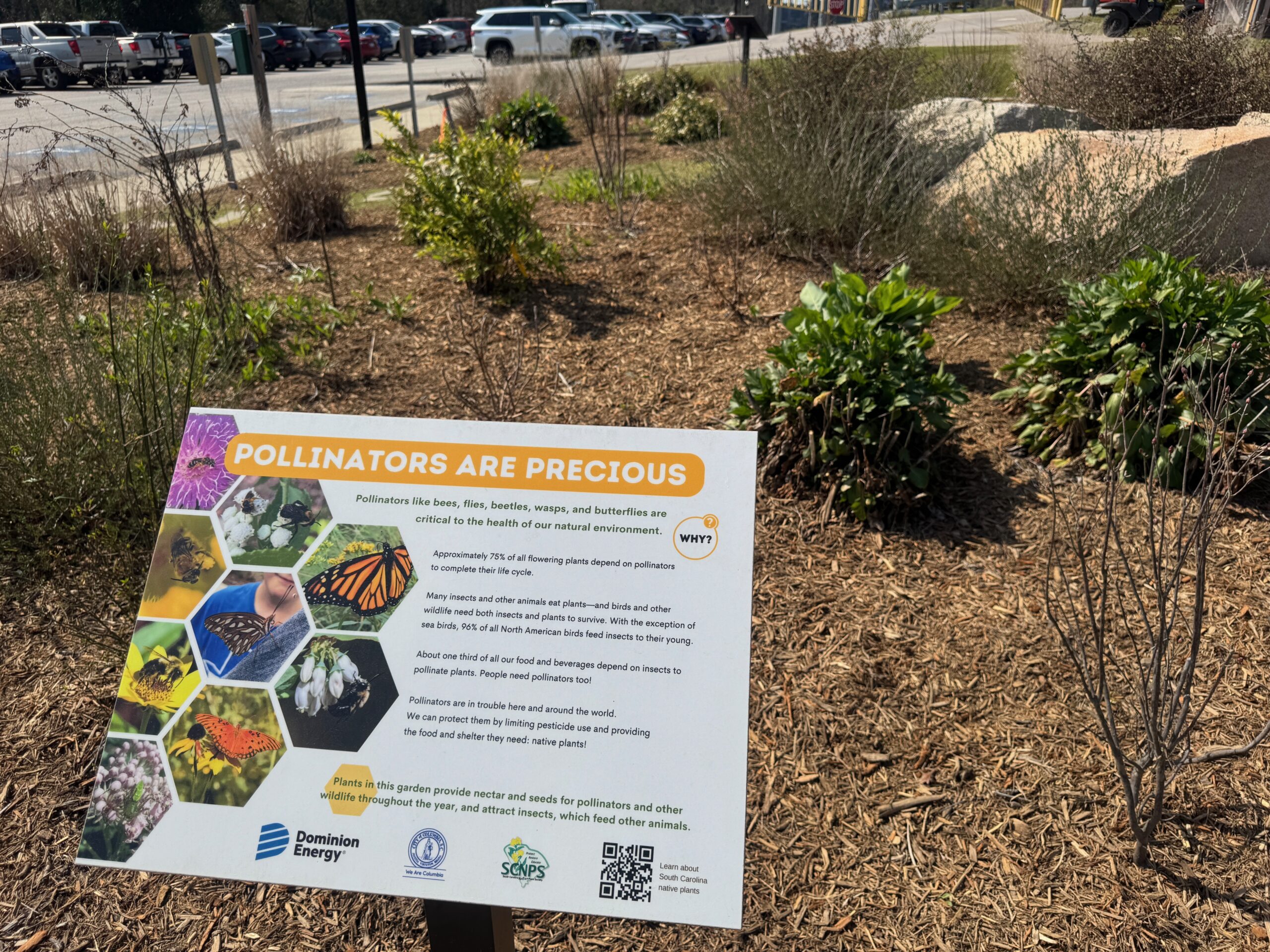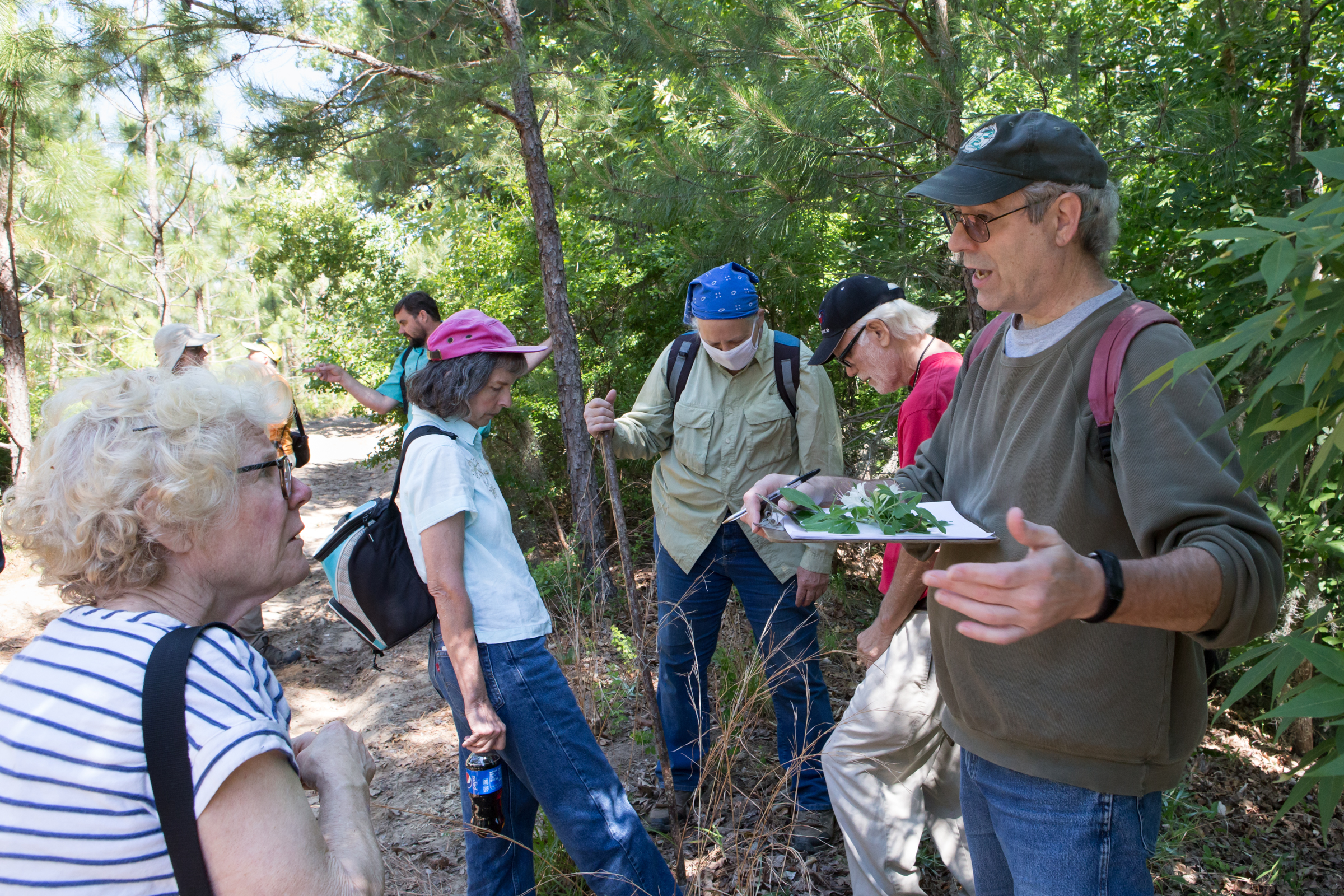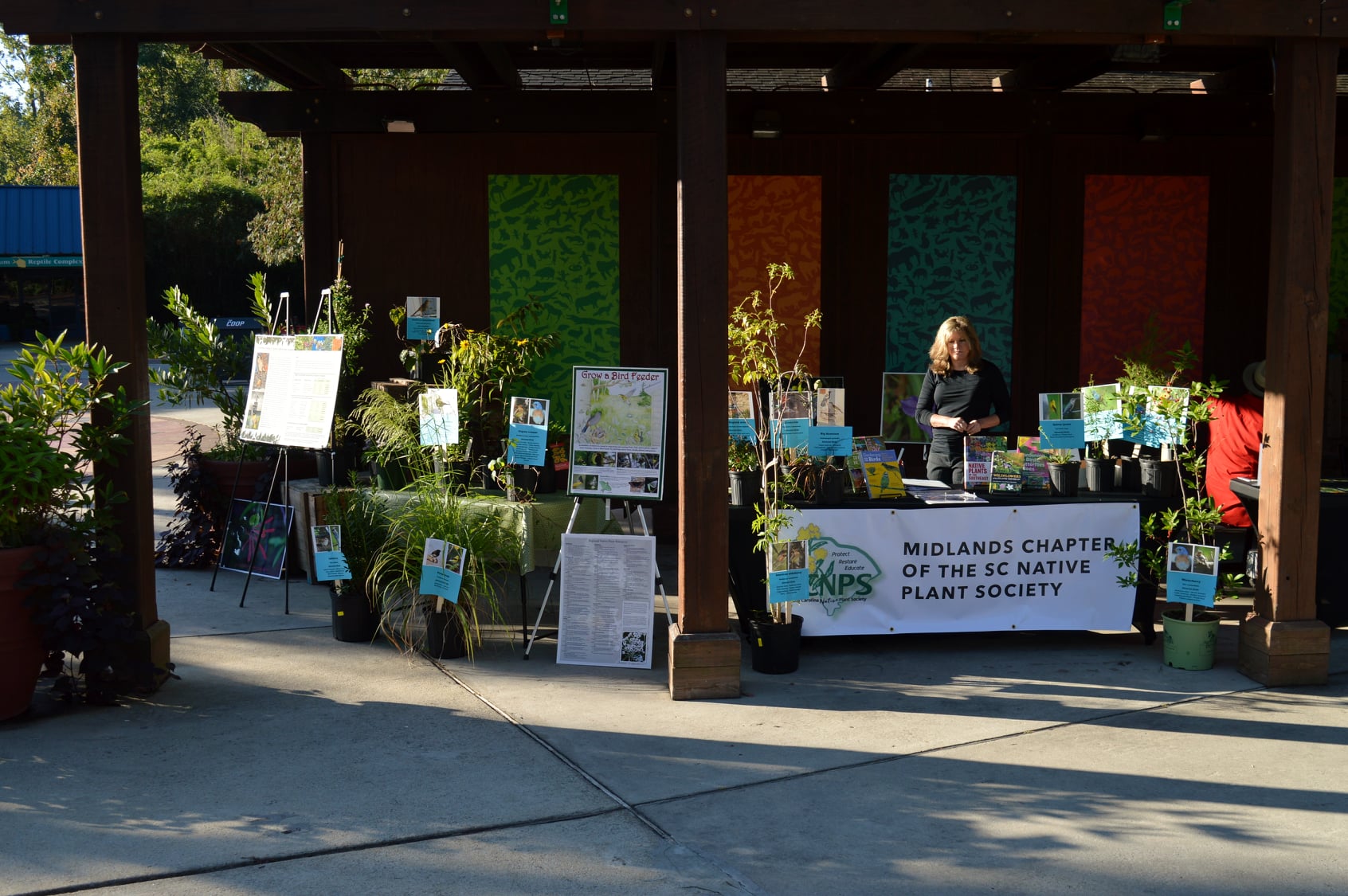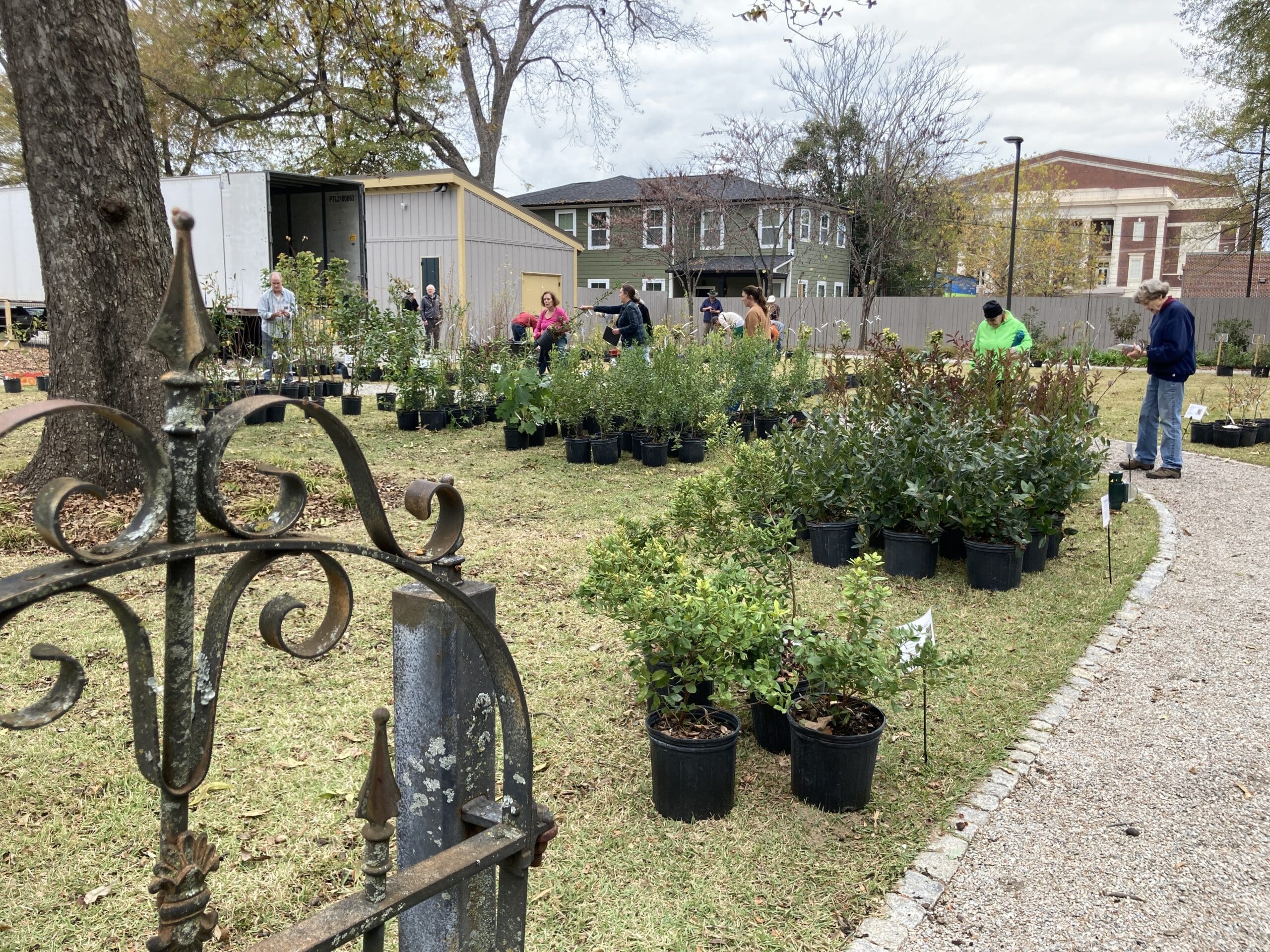About the Midlands Chapter
Preserving and Restoring Native Plant Diversity in the Midlands
Midlands Board Members at Columbia's Earth Day Climate Action Fair
With more than 200 members, this chapter is growing fast. If you’re not already a member, click the link below to join. Interested in finding out more about what we do? Keep scrolling, and visit us on Facebook, Instagram, and YouTube.
Have a question? Send us an email.
Join the Midlands ChapterMeetings
Our member meeting is at 7 p.m. on the 2nd Thursday of odd months. Our board meets monthly on the 1st Thursday.
Meetings range from lectures from local experts to casual meet-ups in a location featuring native plants to hand-on activities. The public is always welcome. Check the Events Calendar to see what’s happening!
Location: Garden Club Council of Greater Columbia building, 1605 Park Circle, Columbia, SC 29201.
Service Projects
Our efforts range from invasives removal, to plant rescue ahead of development, to planting new demonstration gardens. Notable activities include planting native plant gardens at the SC Governor’s Mansion and obtaining a grant from Dominion Energy to demonstrate appropriate plantings under power lines at a demonstration garden at Saluda Riverwalk in Columbia.
Field Trips
We periodically arrange a field trip to a Midlands location that will teach us all something about the native plants that surround us. Examples include a trip to the Congaree Bluffs and a visit to the unique Sandstone Barrens habitat along a section of the Ft. Jackson Passage of the Palmetto Trail.
Education
We educate the public through invitations to speak to community groups, setting up information tables at events like USC Belser Arboretum open house and Riverbanks Zoo’s Earth Day event. We answer individual questions that come to us from social media and the community and through articles in our newsletter. Special projects include working with Dominion Energy to provide lists of native plants suitable for installation under power lines.
Plant Sales
Midlands spring and fall native plant sales have become a popular and important source for gardeners searching for native plants, helping fulfill our mission to help people find them and understand how to use them in home landscaping. Moreover we have been able to create a festival atmosphere at the spring sale by including local food trucks, artists, and booksellers.
Grants and Scholarships
Grants of up to $2000 can support Midlands neighborhoods, student groups, schools, churches, or nonprofits interested in projects that support the SCNPS mission. Scholarships up to $200 support individuals seeking training or education, such as the South Carolina Native Plant Certificate, naturalist courses, or conferences.
We encourage grant applicants to think broadly about how to include South Carolina native plants in their landscapes, and creatively about how to educate friends, neighbors and affinity groups.


